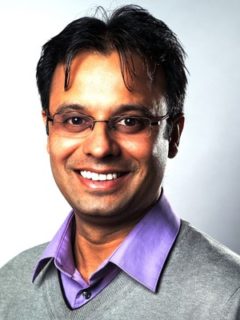Dr. Raminder Singh
Dr. rer. nat. Raminder Singh
Gastwissenschaftler
Development of endothelialized small diameter tissue-engineered grafts for cardiovascular surgery
Betreuer: PD Dr. I. Cicha (Kardiovaskuläre Nanomedizin, Universiätsklinikum Erlangen), Prof. C. Alexiou (Sektion für Experimentelle Onkologie und Nanomedizin, Universitätsklinikum Erlangen)
Mitarbeiter: Dr. R. Detsch, Prof. Dr.-Ing. habil. Aldo R. Boccaccini
Cardiovascular diseases are leading cause of death worldwide. In patients with contra-indication for stent placement, bypass surgery is the method of choice. Vessels used for surgery can be of autologous or allogenic origin. Autologous vessel procurement reduces the risk of rejection, but requires a second surgery site. Additionally, the availability of vascular autografts is limited due to various reasons such as age of patient, status of the vascular tree, pre-surgeries or size-mismatches. Commercially available synthetic grafts made from polytetrafluoroethylene (PTFE, brand name Teflon) or Darcon are used for large diameter vessel replacement, but their patency is very low due to a limited endothelization leading to thrombosis, hyperplasia and a lacking integration into the surrounding tissue. This calls for intensifying the research in order to produce artery-like vessel substitutes. In spite of the profound progress in the field of artificial blood vessel design, development of sustainable small diameter vessels has not been achieved yet. In this project, we aim to develop and investigate different systems that can be used for the production of off-shelf small diameter vessels. By using magnetic cell seeding approach we aim to achieve a stable and precisely uniform coating of scaffold’s lumen with smooth muscle and endothelial cells, creating anti thrombogenic tubular constructs with improved mechanical stability. These aims will be achieved by using biofabrication approaches. Optimizing the efficiency and homogeneity of seeding, reducing the extended cell culture periods and mimicking the native tissue architecture are in focus of this project as the most crucial challenges in vascular tissue engineering.

